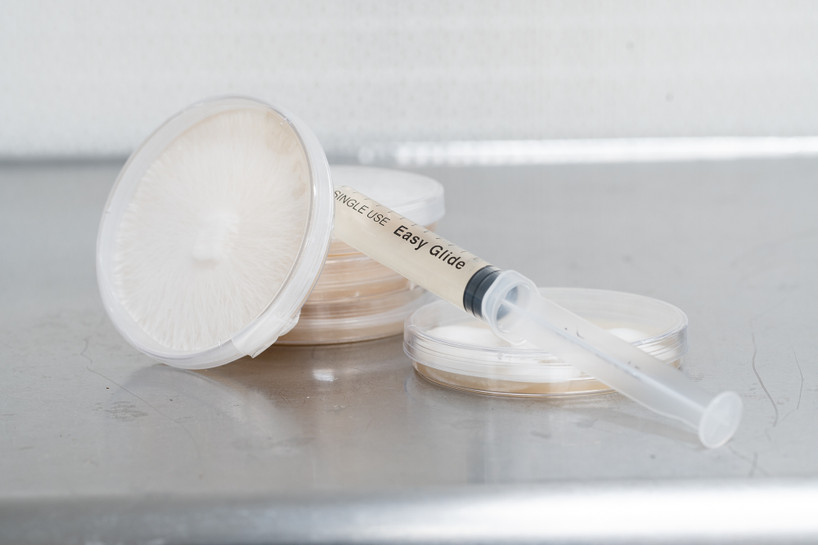Mushroom cultivation is a fascinating and rewarding process that allows you to grow your own fungi at home. Whether you're interested in gourmet mushrooms for culinary purposes or medicinal mushrooms for their unique properties, the journey from spores to harvest is an engaging blend of art and science. In this article, we’ll explore the entire mushroom cultivation process, starting with spores and leading up to a successful harvest. For those looking to get started, High Desert Spores offers premium quality spore syringes to kick off your mushroom cultivation journey.
Understanding Mushroom Spores
Mushroom spores are the starting point of the cultivation process. Spores are microscopic, dust-like particles that serve as the reproductive units of fungi. Unlike seeds, spores don’t contain any stored energy for growth; instead, they require specific environmental conditions to germinate and begin the mushroom life cycle.
In nature, mushrooms release millions of spores into the air, which then land in a suitable environment, such as decaying wood, soil, or other organic material, where they can grow. However, when cultivating mushrooms at home, growers typically use spore syringes for more controlled and reliable results.
Step 1: Choosing Your Spores
The first step in fostering mushrooms is selecting the right spores. Different mushroom species have varying growth requirements, so it’s important to choose a type that matches your environment and skill level. Gourmet varieties like Oyster, Shiitake, and Lion’s Mane are popular choices for home cultivation.
At High Desert Spores, we offer a range of premium quality spore syringes to ensure you start with the best possible foundation. Our spore syringes are meticulously prepared to be free of contaminants, giving you the highest chance of success.
Step 2: Preparing the Substrate
Once you have your spores, the next step is to prepare the substrate. The substrate is the material on which the mycelium—the vegetative part of the fungus—will grow. Common substrates include straw, sawdust, coffee grounds, and specially prepared grain mixtures.
For most mushrooms, sterilizing or pasteurizing the substrate is crucial to prevent contamination from competing fungi or bacteria. This can be done by heating the substrate to kill off unwanted microorganisms while retaining the nutrients necessary for mushroom growth.
Step 3: Inoculation
Inoculation is the process of introducing mushroom spores into the prepared substrate. Using a spore syringe, you’ll inject the spores into the substrate at various points, ensuring they’re evenly distributed. The spore syringe should be shaken well before use to ensure an even distribution of spores.
After inoculation, the substrate should be placed in a sterile environment to minimize the risk of contamination. Many growers use sealed containers or grow bags with small air filters to allow for gas exchange without letting in contaminants.
Step 4: Mycelium Growth
Once the spores are introduced to the substrate, they will begin to germinate and form mycelium. Mycelium is a network of thread-like structures that spread through the substrate, breaking down organic material to absorb nutrients. This stage is known as colonization.
Colonization is a critical phase of the mushroom growing process. The mycelium needs to fully colonize the substrate before fruiting can occur. During this time, it’s important to maintain optimal conditions, including temperature, humidity, and cleanliness, to ensure the mycelium grows vigorously without contamination.
Most mushrooms prefer temperatures between 65-75°F (18-24°C) during colonization, although this can vary depending on the species. The process can take anywhere from a few weeks to a couple of months, depending on the mushroom type and environmental conditions.
Step 5: Fruiting Conditions
Once the mycelium has fully colonized the substrate, it’s time to initiate fruiting. Fruiting is the stage where the mushroom bodies—the part we recognize as mushrooms—begin to form. This stage requires a change in environmental conditions to trigger fruiting, such as lowering the temperature, increasing humidity, and introducing light.
For most mushrooms, a drop in temperature, along with a high humidity level of around 85-95%, is essential for fruiting. Light exposure is also important, though mushrooms don’t require direct sunlight; indirect or diffused light is usually sufficient.
At this stage, it’s important to monitor the environment closely. Too little humidity can cause mushrooms to dry out, while too much moisture can lead to mold growth. Proper airflow is also critical to prevent the buildup of CO2, which can inhibit mushroom development.
Step 6: Harvesting
After a few days to a couple of weeks, you’ll begin to see mushrooms forming on the surface of the substrate. This is the culmination of all your hard work! Mushrooms grow quickly during the fruiting phase, so it’s important to check on them daily to determine the best time for harvesting.
Mushrooms are typically ready to harvest when the caps begin to open but before the gills are fully exposed. Harvesting at the right time ensures the best texture and flavor, especially for gourmet varieties.
To harvest, gently twist or cut the mushrooms at the base of the stem. It’s important to handle them carefully to avoid damaging the remaining mycelium, which can often produce additional flushes (subsequent crops) of mushrooms after the initial harvest.
Step 7: Post-Harvest Care and Storage
After harvesting your mushrooms, it’s essential to store them properly to maintain their quality. Fresh mushrooms have a high moisture content and can spoil quickly, so they should be consumed within a few days or preserved through drying or freezing.
To dry mushrooms, simply place them in a well-ventilated area with low humidity until they are fully dehydrated. You can also use a food dehydrator for faster results. Dried mushrooms can be stored for several months in an airtight container in a cool, dark place.
If you prefer to freeze your mushrooms, it’s best to blanch them first by briefly boiling them in water. This helps preserve their texture and flavor when thawed.
Troubleshooting Common Issues
While mushroom cultivation is a rewarding process, it can also be challenging, especially for beginners. Here are some common issues you might encounter and how to address them:
- Contamination: If you notice mold or strange odors, your substrate may be contaminated. Contamination can often be avoided by maintaining a sterile environment and ensuring proper sterilization of the substrate.
- Slow or Stalled Mycelium Growth: If your mycelium isn’t colonizing the substrate as expected, it could be due to incorrect temperatures, insufficient moisture, or contamination. Check your environmental conditions and make adjustments as needed.
- Poor Fruiting: If your mushrooms aren’t fruiting well, it could be due to improper humidity, light, or temperature during the fruiting stage. Make sure you’re providing the right conditions for your mushroom species.
Conclusion
Cultivating mushrooms from spores is an exciting and educational process that can yield delicious and nutritious results. With the right spores, substrate, and growing conditions, you can successfully cultivate mushrooms at home. High Desert Spores is proud to offer premium quality spore syringes to help you start your mushroom-growing journey with confidence. Whether you’re a novice or an experienced grower, the process of turning spores into a bountiful mushroom harvest is both a challenge and a delight that never gets old.

